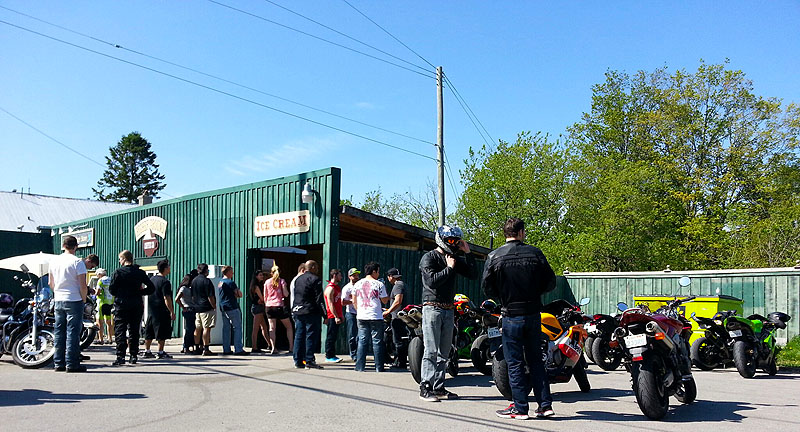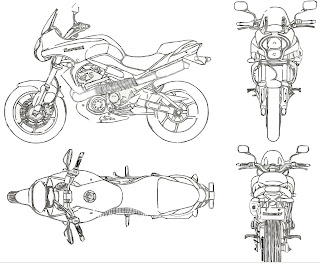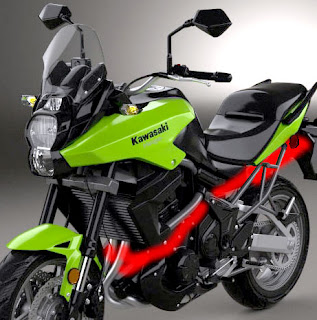Learning Goals & Success Criteria
This past week we had a department heads visioning day. One of the focuses (from the Ministry through the Board) was a concerted focus on clearly articulating learning goals and success criteria. This goal/criteria approach has a lot of traction in current educational thinking. Clearly stating the point of a lesson allows for greater focus for the teacher and greater fairness in instruction for the student. In the ideal classroom clearly articulated learning goals along with specific criteria that demonstrate success allow everyone to work to a commonly understood end.
Learning goals and success criteria offer a trendy sense of student centered equality and transparency with no chance of nasty teachers changing up goals to suit their own megalomania. In the process of establishing these learning goals and success criteria, teaching becomes a linear, reductive process that anyone with the right flowchart could follow.
There has been an ongoing attempt to simplify teaching in order to more efficiently (read: cheaply) manage it. This is often hidden in business terminology like data driven analysis or goal orientated production. The urge to simplify teaching offers some real financial payoffs. If teaching is something that can be reduced to piece work we can drastically reduce professional expectations (and what we pay for them). This cynicism is what I approached this latest PD with. Do the powers that be want me to do this for the good of my students or for the good of the system? The two things are often not mutually compatible.
Like many other previous educational fads LG/SC seems to have come from elementary classrooms. In a grade two class where you need to provide structure around early student learning in order to show them the way this might have a credible place. With sixteen year olds on the verge of moving beyond the classroom, clearly articulated goals and criteria could as easily obstruct the purpose of the lesson as it does help students. In complex learning environments the teacher can often use the process of self-directed discovery to empower student learning. If we are working in a lab on an experiment, clearly articulating the goal and success criteria to get you there reduces the complex process of scientific experimentation to a series of if/then statements. In a room where experienced students are working with advanced ideas, learning goals seem like a simplistic step backwards.
In the working world you don’t often find yourself with clearly articulated goals and criteria. Workplaces and even post secondary education are complex environments in which self directed learning, organization and initiative are valued more than your ability to follow clearly articulated goals, assuming you’re given any goals at all. Asking high school teachers to focus on this means of ‘student success’ is like asking capable bicycle riders to put training wheels on in order to not fall over so much. The intent might be to offer them a greater sense of safety and focus, but the result is a capable rider not being able to test their limits on the bike.
Schools already do a great job of atrophying initiative, creativity, self-direction and differentiation of learning in students. That a new system hopes to close that off even more is worrying. Where is there space for initiative, self directed learning or differentiation in classroom focused on listed goals and criteria? Clearly articulated goals might help those who have no idea why they are in school, but they limit everyone else, especially at a secondary level, and even more so in non-deterministic learning situations.
I teach computer engineering and like many technology classes the students are asked to work in a stochastic, non-deterministic learning process. As we push learners into more advanced learning situations clear goals become a detriment to their learning, much like any other expectation. Rather than being able to discover direction through research and experimentation, the goal orientated classroom is barren and linear. Perhaps it works for academic subjects but it never has in my experience, and the academic teachers it does work for aren’t teachers anyone brags about. If education is about discovery and engagement then ideas like goals and success criteria need to be handled very lightly, not suggested as a school wide success strategy by class room reviewers.
Many of the heads at our meeting weren’t interested in picking up another one year fad from the Board, though they didn’t articulate why other than simply being tired of them. For me this latest educational focus raises some fundamental questions about education. Are we teaching students to learn or are we teaching them curriculum material? Since those two things often conflict with teach other, it would be good to hear what our overall goal is. I’m all for learning to learn, and to do that you can’t be trying to reduce learning to a flowchart of actions. Learning is a fantastic and fantastically complicated process, and teaching someone how to do it goes back to the old adage about teaching a person to fish as opposed to giving them a fish.
Learning goals and success criteria fit nicely into the data driven educational management paradigm. I have a number of concerns about driving education by the numbers. Data (statistics) might offer some insight, but to drive education policy based upon them seems a cart before the horse approach. I’d much rather follow a vision than my own tail (the stats from last year). Following the numbers smacks of the kind of self-justifying business think I and others have railed against.
Teacher Intent
 |
Teacher intent: pure evil? If so,
learning goals can save you from
yourself! |
Teacher intent is probably the most important piece of this puzzle. A teacher who doesn’t know what they are doing or is doing it maliciously is the kind of teacher that needs learning goals and success criteria in order to be fair to their students; goals and clearly stated criteria stop that kind of teacher from doing damage. Anyone teaching from a place that needs learning goals and success criteria in order to be fair to their students shouldn’t be teaching. A powerful learning environment is safe enough that students can be humble without feeling inferior and a teacher can let compassion rather than megalomania direct their ego when they are trusted with that most fragile of vessels, an ignorant human being.
In Ontario we’ve done everything possible in the past year to damage teacher intent. From governments to media to political parties to ministry to boards and unions; teacher intent has taken a beating from pretty much everyone. Into this low place we’re delivered the latest silver bullet in education that seems designed to replace teacher intent entirely with data driven, linear, flow chart orientated goal setting.
Is teaching an art or a flowchart? Is it a complex human endeavor or a business process? I know many education managers and their financial overlords would like to turn what we do into (data driven) piece work, but that will result in an Americanization of our education system that will cause a plunge in quality much like they have experienced south of the border. Simplifying education hurts everyone.
Teacher intent is the elephant in every room whenever I hear anyone talk about teaching and learning. Politicians love to take it out and abuse it for their own shabby ends, the general public only remembers their worst experiences in school and belittle teachers for it, and unions refuse to even consider teacher intent because it would call into question the competence of their own members. Meanwhile, many teachers question it in themselves and in their colleagues.
If your teachers are caring, careful, professionals who approach each lesson with the intention of maximizing their student’s potential, you’re going to have a positive learning environment. Making teachers write that intent on the board won’t stop bad teachers from being unfair, and good teachers will find it limiting. How often have you started a lesson only to have to make an abrupt change because student understanding or mood isn’t where you need it? If you’ve already written up what you’re doing it makes what should be a graceful, responsive changes into an awkward situation in which you’ve emphasized student ignorance.
 The mindset a teacher enters a classroom is pivotal to successful learning in that classroom. A teacher who is resilient, mentally agile, even handed and humble before their own power is the most powerful thing a student could hope for in learning. That teacher happily bounces out that door to do extracurriculars, works with colleagues beyond their own classroom and encourages personal growth rather than data collection in their students. They aren’t trapped in myopic data collection, they don’t see people as data, they see them as people. A happy, capable teacher is a wonder.
The mindset a teacher enters a classroom is pivotal to successful learning in that classroom. A teacher who is resilient, mentally agile, even handed and humble before their own power is the most powerful thing a student could hope for in learning. That teacher happily bounces out that door to do extracurriculars, works with colleagues beyond their own classroom and encourages personal growth rather than data collection in their students. They aren’t trapped in myopic data collection, they don’t see people as data, they see them as people. A happy, capable teacher is a wonder.
Rather than frankly examining, understanding and improving teacher intent we get professionally developed toward systematic, process orientated teaching practices that feed data into the education machine.
Students aren’t the only bricks in the wall.






















